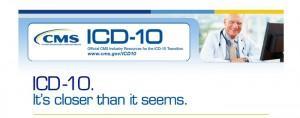
The issue at hand is more than the complex and specific codes that will be required under ICD-10 but also, the need for coders to understand the references providers will be making.
Start practicing, relearning is an essential.there is an increase in the number of billing codes, from 17,000 to 140,000. Coders will need to have a more detailed knowledge of anatomy and physiology, as well as medical terminology. Being ICD-10 ready will differ according to each practice, because of the size of the systems each may have and the differences in codes for each practice. Regardless of what stage you are at in the transition timeline, it is never too early to start practicing the new coding. With the proper discipline there is no reason for a practice to not be ready by the deadline. Providers have their own roles in being prepared, such as running tests on their financial processes to ensure proper functioning once the transition goes live.
Training; the earlier and the more often the better. This paramount advice we can give, because the impact of being ill prepared will be huge and hit your practice hard. These changes in the medical billing practices are significant enough to have caused marked slowdowns in billing and payment in other countries. This is why the ICD-10 implementation, comes down to how much time you took to prepare.
The comfortable the staff feels about the changes the closer you are to a smooth transition. Leading to a more productivity of your coding and medical billing staff. You should also make the decision now if you will need to hire new staff, to ensure productivity doesn’t suffer in the days after the ICD-10 switch flips.
Backlog; now is the time to make backlog coding work a essential part of your workday. This will ensure you to have little or no coding backlog when the ICD-10 deadline arrives.
http:/http://youtu.be/3IadaaMdCX0

